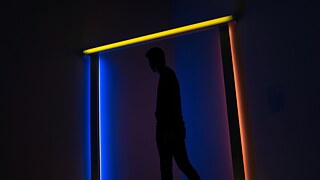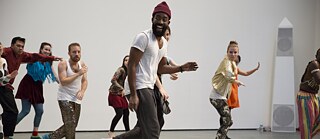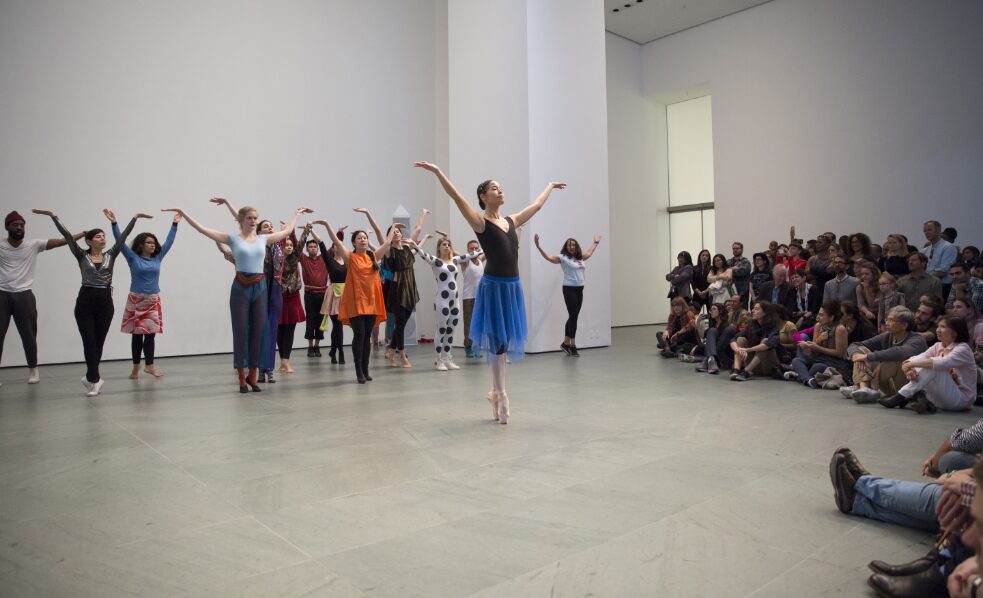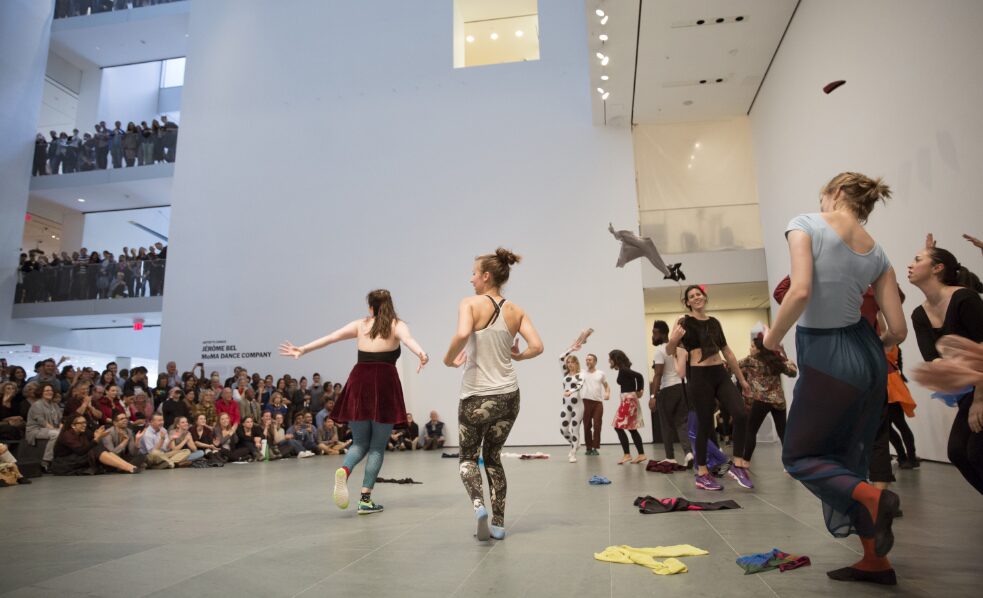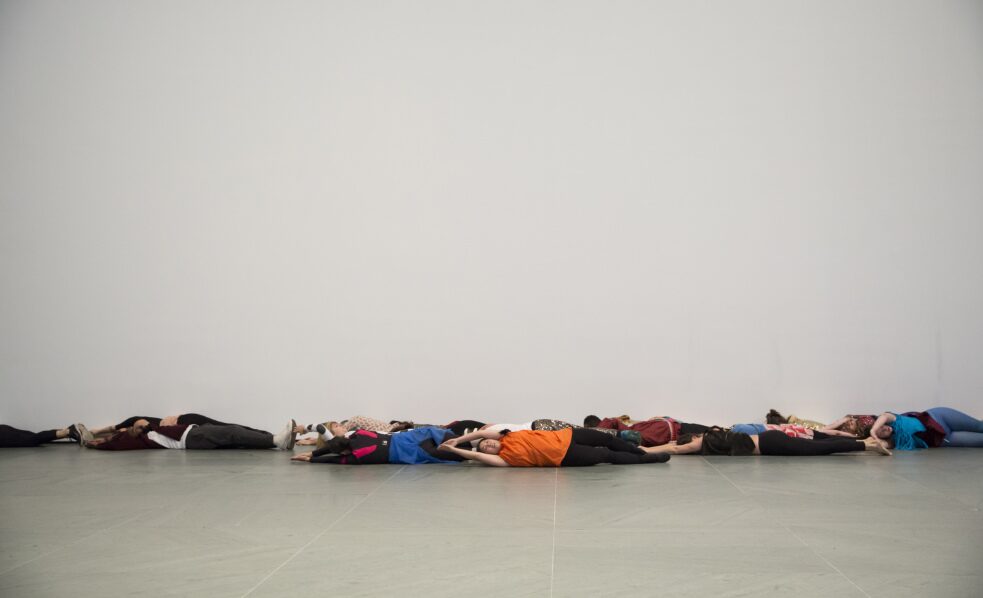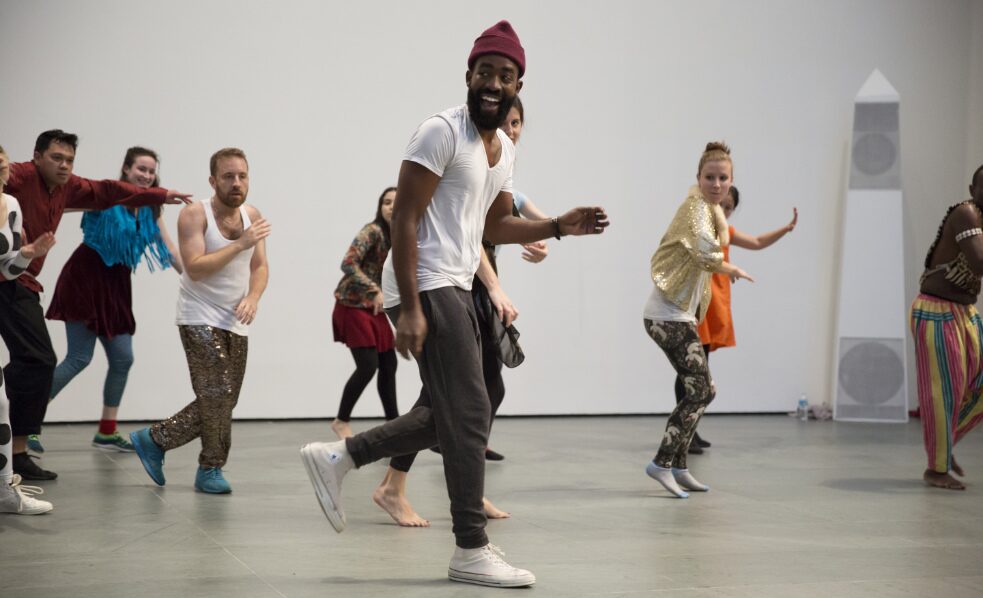Modern Dance
The Shape of Things to Come
Taking risks is intimately linked to making mistakes. In terms of thinking about art and making art, mistakes can be corrected or altered. There is the possibility of shaping rupture. The overlying sensibility is to understand that it is the dissonance and the inherent questions that prevail.
The notion is not to consciously seek out mistakes or create artifice to mask the errors. Rather a questioning attitude emerges as the basis of these queries into imperfection, and the search of an authentic voice. In contemporary dance, the notion of harnessing the power of spontaneity and embracing opportunity, and miscues, is key.
In truth, the creative space evolves around contradictions, contentious issues, and unplanned ruptures, and an aversion to the idea of “perfection.” Delving into the fault lines of creation is an immersive undertaking. Akram Khan’s thinking around the demands of trying to achieve perfection are significant. He prefers mistakes because they’re more interesting. In a post-performance discussion, he asserted that his training was built from having to stay strict to his task but said when those measures break, that’s where the information comes from.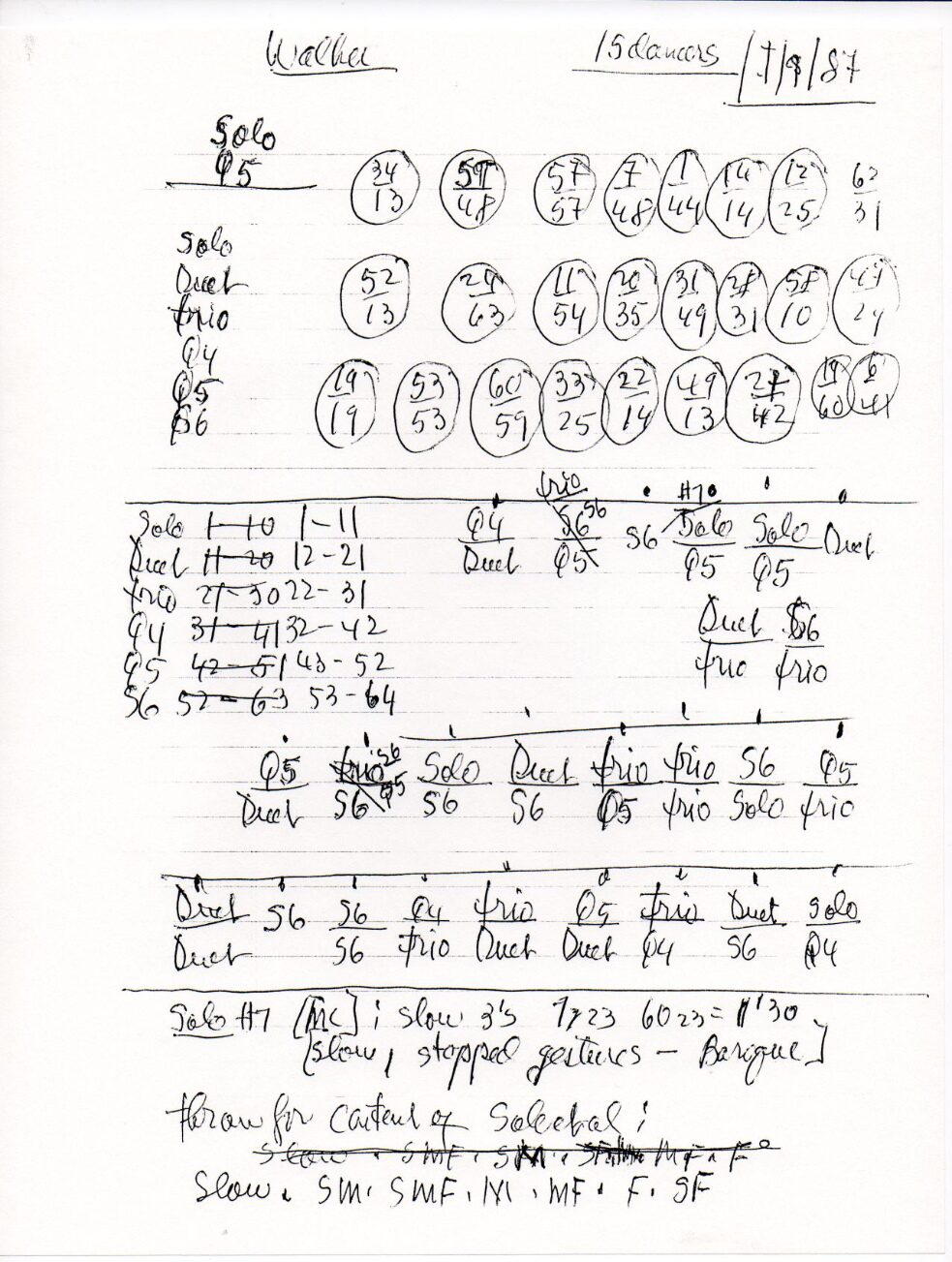 The numbers at the top are pairs of hexagrams. In this case each hexagram correlates to either a solo, duet, trio, quartet, quintet, or sextet. There’s a key below that shows which hexagrams correspond to which groups (e.g., Hexagram 1-11 is a solo, 12-21 is a duet). Then, below the numbers, he has “translated” the score into the groupings. Here, the dance opens with a section for a quartet and a duet. At the bottom it says “throw” for the content of solos, et al. (meaning, throw the I Ching to get a hexagram, each hexagram in that case corresponds to a phrase).
| © Merce Cunningham Trust, all rights reserved.
The numbers at the top are pairs of hexagrams. In this case each hexagram correlates to either a solo, duet, trio, quartet, quintet, or sextet. There’s a key below that shows which hexagrams correspond to which groups (e.g., Hexagram 1-11 is a solo, 12-21 is a duet). Then, below the numbers, he has “translated” the score into the groupings. Here, the dance opens with a section for a quartet and a duet. At the bottom it says “throw” for the content of solos, et al. (meaning, throw the I Ching to get a hexagram, each hexagram in that case corresponds to a phrase).
| © Merce Cunningham Trust, all rights reserved.
Like mistakes often can, this opened up new possibilities for Cunningham and Cage. Theirs was an ideal refuge, and they profoundly transformed the way collaboration has been perceived.
An article in The New York Times indicates that Bel isn’t afraid of failure, nor is he concerned with locked structures. “I’m not interested in becoming a museum of myself,” he said. “I want to do new things.” His approach to movement indicates that this kind of staging reinforces that the more chances you take, the more freedom you have to invite discourse.
During this time of quarantine, we’re discovering a period of dodgy gambit, full of paradox and contradiction. We’ve become alert to the idea of breaking things down, reviewing our ideas about “crossing the line,” and finding new meaning in pre-conceived codes of doing things together. In this upside-down world of pandemic lockdown, we’re being encouraged to expand the possibilities of learning and growth and to foster an atmosphere of mutual respect and openness in our interactions and creatively build new means of connection. As the days meld into months, people are in a constant state of reflection, gauging the possibilities of what’s in front of them. We were once told that isolation keeps us powerless, as people had previously adapted easily to the need to come together to work and create. Now, with the acceptance of ruptures in our societal vision and neoliberal development narratives in full evidence, failures are subversive catalysts.
In this time of shared online existence, audiences and makers alike are seriously revising creation strategies and pausing to consider a multiplicity of meanings, engulfed in the ways in which they perceive, observe, and judge actions, or a set of actions, about our lives in common.
Unafraid of making mistaktes
In the late 1990s, contemporary dance choreographer and curator Lynda Gaudreau was advancing a series of works integral to her Encyclopœdia project. At the time, she pulled back the curtain revealing the authoritative questions that arise during her working process, and a glimpse into understanding who she is as an artist, not just the art. “What is crucial in this Encyclopœdia is not to stray from the spirit of the laboratory, the research lab, unafraid of making mistakes — this is what drives me to use other forms of expression, including literature, video, photography, film, and installation,” she stated.In truth, the creative space evolves around contradictions, contentious issues, and unplanned ruptures, and an aversion to the idea of “perfection.” Delving into the fault lines of creation is an immersive undertaking. Akram Khan’s thinking around the demands of trying to achieve perfection are significant. He prefers mistakes because they’re more interesting. In a post-performance discussion, he asserted that his training was built from having to stay strict to his task but said when those measures break, that’s where the information comes from.
Radical Innovations
Choreographer Merce Cunningham’s collaboration with composer John Cage, from the early 1950s onward, proposed radical innovations, including upending the interdependent relationship between dance and music. They developed a method of putting work together known as chance procedures, an organic process determining and ordering dance and musical phrases, including the number of repetitions, direction, and spatial relation. The numbers at the top are pairs of hexagrams. In this case each hexagram correlates to either a solo, duet, trio, quartet, quintet, or sextet. There’s a key below that shows which hexagrams correspond to which groups (e.g., Hexagram 1-11 is a solo, 12-21 is a duet). Then, below the numbers, he has “translated” the score into the groupings. Here, the dance opens with a section for a quartet and a duet. At the bottom it says “throw” for the content of solos, et al. (meaning, throw the I Ching to get a hexagram, each hexagram in that case corresponds to a phrase).
| © Merce Cunningham Trust, all rights reserved.
The numbers at the top are pairs of hexagrams. In this case each hexagram correlates to either a solo, duet, trio, quartet, quintet, or sextet. There’s a key below that shows which hexagrams correspond to which groups (e.g., Hexagram 1-11 is a solo, 12-21 is a duet). Then, below the numbers, he has “translated” the score into the groupings. Here, the dance opens with a section for a quartet and a duet. At the bottom it says “throw” for the content of solos, et al. (meaning, throw the I Ching to get a hexagram, each hexagram in that case corresponds to a phrase).
| © Merce Cunningham Trust, all rights reserved.
Like mistakes often can, this opened up new possibilities for Cunningham and Cage. Theirs was an ideal refuge, and they profoundly transformed the way collaboration has been perceived.
“I want to do new things.”
A commanding example of developing skills and presenting choreographic adventures where artists could make mistakes occurred when choreographer Jérôme Bel, publicly unveiled “Jérôme Bel /MoMA Dance Company” at New York’s Museum of Modern Art, part of its Artists’ Choice series, in 2016. Normally, artists in this program would acknowledge the artworks of the museum collection. Bel chose another process: he’d feature 25 MoMA staff members from the administrative, operational, financial, educational, exhibition design, and curatorial departments of the museum as performers. These were non-professional dancers, and not surprisingly they each moved quite differently. They had just three rehearsals as a group. The press release for the event indicates, “Bel… became interested in the relation of the Museum’s employees to specific artworks, to the institution, and even to dance… The project explores the social potential of dance to create ephemeral communities through joint movement.”The wonderment of the MoMA show is that each person created their own two-minute dance/choreography set to a favorite piece of music that they would perform while the rest of the company tried to follow along behind them. I emphasize “tried” because no one was expected to learn the dance or demonstrate expertise. Essentially, being a good sport, being vulnerable, making mistakes, made the work fundamentally democratic. As one participant in Bel’s work commented, that “let’s dance” spirit, “allowing our slips to show — in other words, all that bittersweet business of being human — is precisely what draws us to one another.”
An article in The New York Times indicates that Bel isn’t afraid of failure, nor is he concerned with locked structures. “I’m not interested in becoming a museum of myself,” he said. “I want to do new things.” His approach to movement indicates that this kind of staging reinforces that the more chances you take, the more freedom you have to invite discourse.
During this time of quarantine, we’re discovering a period of dodgy gambit, full of paradox and contradiction. We’ve become alert to the idea of breaking things down, reviewing our ideas about “crossing the line,” and finding new meaning in pre-conceived codes of doing things together. In this upside-down world of pandemic lockdown, we’re being encouraged to expand the possibilities of learning and growth and to foster an atmosphere of mutual respect and openness in our interactions and creatively build new means of connection. As the days meld into months, people are in a constant state of reflection, gauging the possibilities of what’s in front of them. We were once told that isolation keeps us powerless, as people had previously adapted easily to the need to come together to work and create. Now, with the acceptance of ruptures in our societal vision and neoliberal development narratives in full evidence, failures are subversive catalysts.
In this time of shared online existence, audiences and makers alike are seriously revising creation strategies and pausing to consider a multiplicity of meanings, engulfed in the ways in which they perceive, observe, and judge actions, or a set of actions, about our lives in common.
